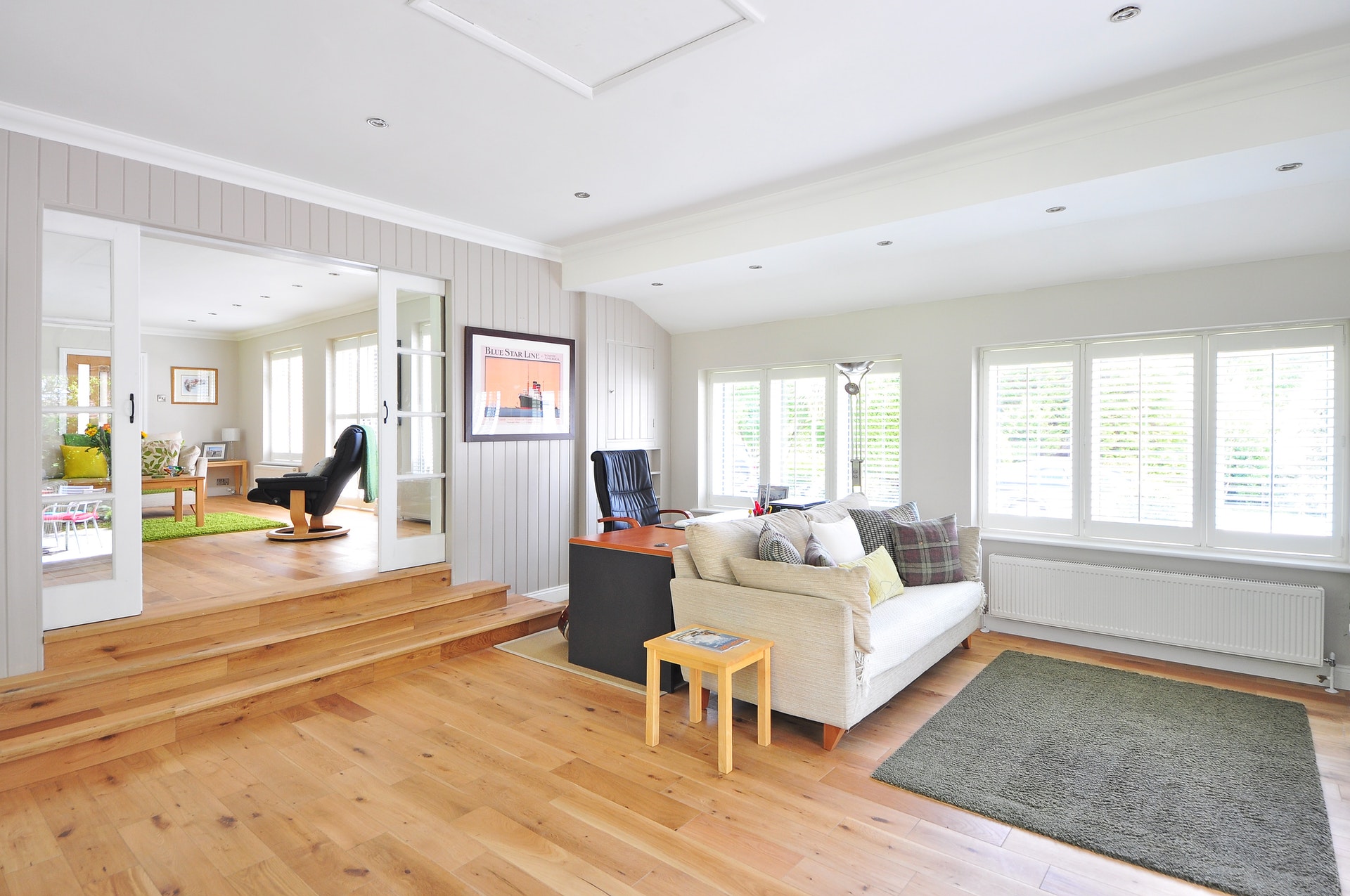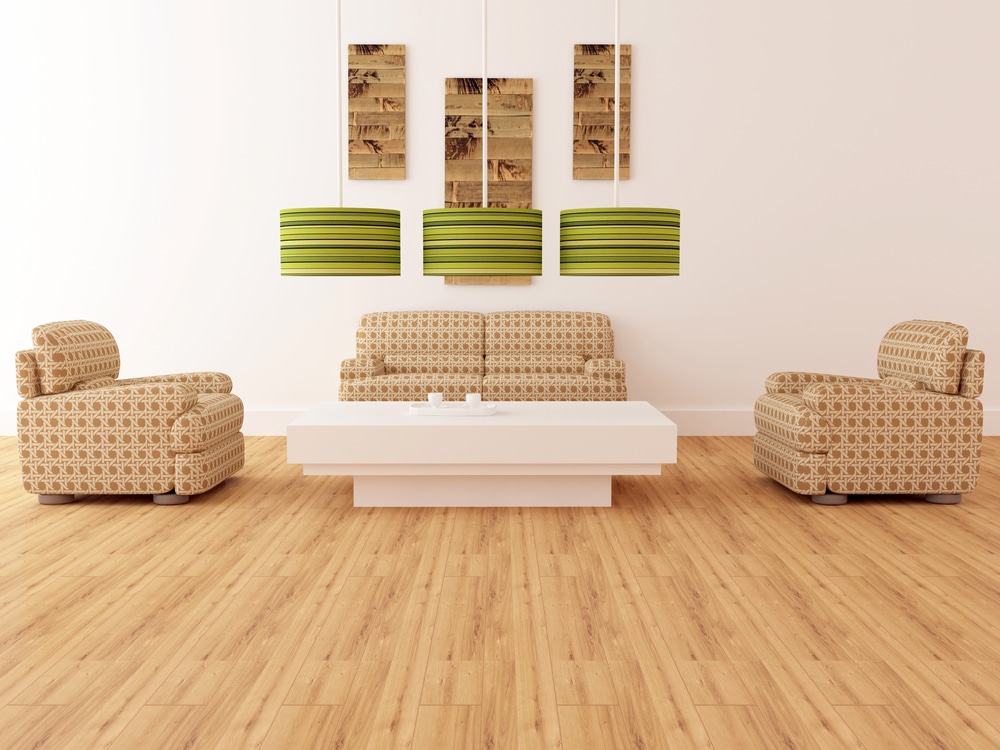No products in the cart.
Other Flooring
Hardwood and bamboo flooring are consistently popular with homeowners throughout the country. While classic hardwood has been a staple for many traditional home settings for decades, bamboo is a more recent addition in the marketplace. It gives the look and feel of wood, and usually comes in the same material formats as hardwood choices. The most common is ¾-inch thick solid planks and engineered forms featuring natural veneers laminated over manufactured cores.
are consistently popular with homeowners throughout the country. While classic hardwood has been a staple for many traditional home settings for decades, bamboo is a more recent addition in the marketplace. It gives the look and feel of wood, and usually comes in the same material formats as hardwood choices. The most common is ¾-inch thick solid planks and engineered forms featuring natural veneers laminated over manufactured cores.
 are consistently popular with homeowners throughout the country. While classic hardwood has been a staple for many traditional home settings for decades, bamboo is a more recent addition in the marketplace. It gives the look and feel of wood, and usually comes in the same material formats as hardwood choices. The most common is ¾-inch thick solid planks and engineered forms featuring natural veneers laminated over manufactured cores.
are consistently popular with homeowners throughout the country. While classic hardwood has been a staple for many traditional home settings for decades, bamboo is a more recent addition in the marketplace. It gives the look and feel of wood, and usually comes in the same material formats as hardwood choices. The most common is ¾-inch thick solid planks and engineered forms featuring natural veneers laminated over manufactured cores.
Bamboo, in fact, is not a form of wood but is actually a grass. It is native to tropical regions of the world. It grows quickly so is thought to be a highly sustainable choice for flooring, furniture, and other products.
Of course, many people are familiar with the variety of species in wood floors available for the homes and offices. These include oak, maple, walnut, cherry, pine, polar, mahogany, ash, hickory, and more—including less commonly used species like tiger and teak. Each one has a unique look, grain, feel, and density. There are also engineered wood varieties along with the solid versions.
Some manufacturers group bamboo into their hardwood selections because of the similarities and the fact that shoppers who like wood-floor looks also are drawn to bamboo designs. When a flooring product is referred to as hardwood, technically it is not always going to be a very hard material. Woodworkers and flooring specialists sometimes perform a measurement test for resilience called the Janka Hardness Test. It looks at impact and scratching resistance after pressing steel balls into the wood and measuring indentations. Hardwoods, softwoods, and bamboo are rated, and at times the bamboo or softwood types outdo some hardwood species. It is a good reminder to not look at names or designations alone.
Both bamboo and wood flooring must be carefully sealed and avoid water exposure as they can each get extensive damage when puddles sit for long. With the solid planks, they can be polished and sealed regularly, and floors with many scratches or dents can be professionally sanded to even out the surface then re-stained, if desired, and sealed. Similarly, bamboo flooring can also be professionally sanded and sealed if it gets dents or scratches through the years.
 With engineered versions of these materials, they have a fairly thin laminate on top so while you may be able to sand and re-stain and seal it one time, it’s not likely to withstand it more than this without sanding through to the core and ruining the preferred look of the floor. Solid planks can go through many sanding treatments before you need to be concerned with integrity or thickness of the boards.
With engineered versions of these materials, they have a fairly thin laminate on top so while you may be able to sand and re-stain and seal it one time, it’s not likely to withstand it more than this without sanding through to the core and ruining the preferred look of the floor. Solid planks can go through many sanding treatments before you need to be concerned with integrity or thickness of the boards.
In terms of uniqueness in choices, hardwood has a much larger array of options to choose from. The colors, grain patterns, and depth of looks vary greatly. As well, different cuts deliver their own special grain consistencies, and different grades, too, can produce completely unique designs. Flooring shoppers have many choices and should spend plenty of time when they browse through their wood species and grade selections.
When a designer or homeowner knows they’ll choose bamboo, they will have fewer options and so will likely need less time to shop and choose. There are usually three simple preferences to select from: flat grain bamboo; vertical grain bamboo; or, stranded bamboo. Flat is crafted like plywood, with flat, thin layers adhered together in a strong system. Vertical uses bamboo strips adhered to each other on the edges, resembling stripes in the final products. Stranded mixes hardy resin with bamboo fibers to offer a more mottled, eclectic design.
If installing wood or bamboo in a space, it is vital to ensure it is not a below-grade or moist area because neither material does well with dampness. Mold and mildew can form easily underneath these flooring materials as well as on them. If there is even a remote chance of moisture occurring underneath a wood or bamboo floor, use a strong vapor barrier before placing.
Whichever flooring product you select for your home or office space, enjoy that beautiful new look and feel. If any questions or issues arise, check your warranty and stay in touch with the manufacturer for optimal satisfaction.
Buying
When browsing vinyl floor materials, you’ll notice the various forms include vinyl sheet, composition tile, luxury vinyl tile, and luxury vinyl plank. All are excellent options for a number of settings, with some fitting in more keenly in certain rooms than others. Consider and research the benefits of each to determine which material suits your environment best, then move on to the fun part of selecting a design.
